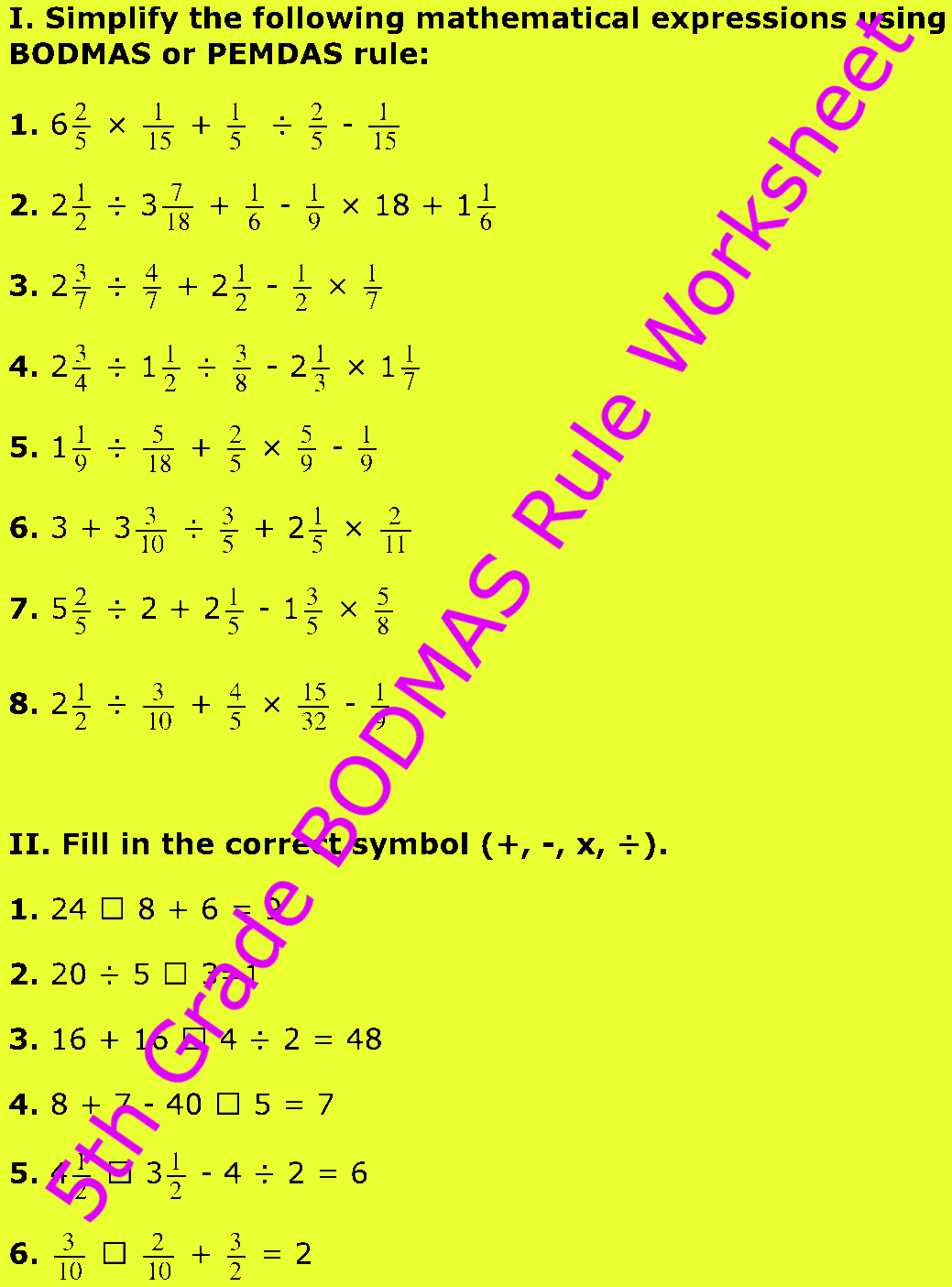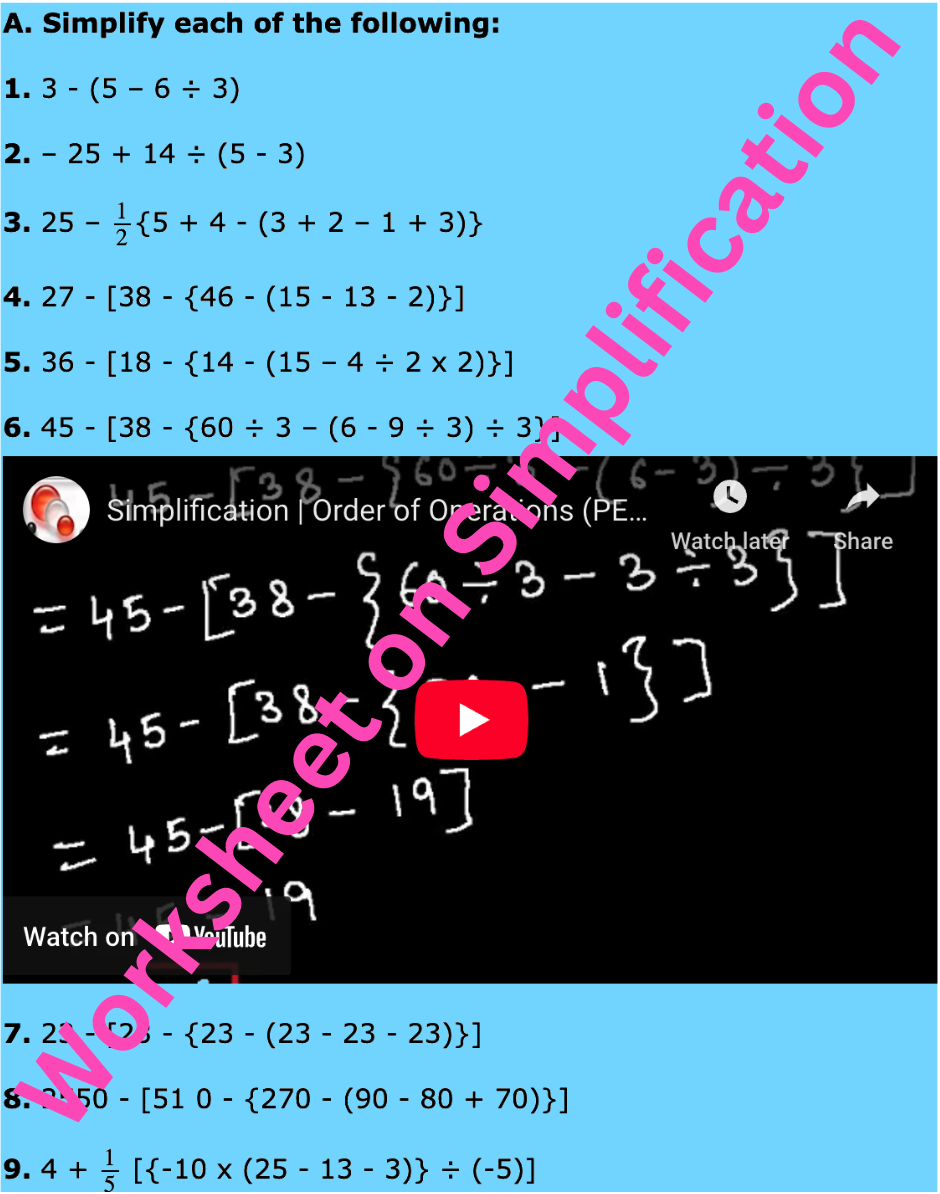Division as The Inverse of Multiplication
In division as the inverse of multiplication, let a and b be two whole numbers. Dividing a by b means finding a whole number which when multiplied by b gives a and we writea ÷ b = c.
Thus, a ÷ b = c or a = b × c
For example:
Divide 28 by 7 means finding a whole number which when multiplied by 7 gives 28. Clearly, such a number is 4. So, we write 28 ÷ 7 = 4.
Similarly, we have
12 ÷ 4 = 3, since 4 × 3 = 12
35 ÷ 5 = 7, since 5 × 7 = 35
2 ÷ 1 = 2, since 2 × 1 = 2
15 ÷ 15 = 1, since 15 × 1 = 15
42 ÷ 6 = 7, since 6 × 7 = 42
Division by Inverse of Multiplication:
|
Division Fact 24 ÷ 4 = 6 |
→ |
Multiplication fact = 6 × 4 = 24 or 4 × 6 = 24 |
|
Multiplication Fact 6 × 3 = 18 |
→ |
Division Fact = 18 ÷ 3 = 6 or 18 ÷ 6 = 3 |
Note:
If a and b are two whole numbers, then a ÷ b is also expressed as a/b.
Thus, a ÷ b = c or a = bc, which can also be written as
ab = c or a = b × c.
Questions and Answers on Division as The Inverse of Multiplication:
I. Write division facts: One has been done for you.
|
(i) 6 × 8 = 48 ___________________ 48 ÷ 6 = 8 48 ÷ 8 = 6 |
(ii) 9 × 5 = 45 ___________________ ..... ÷ ..... = ..... ..... ÷ ..... = ..... |
|
(iii) 12 × 7 = 84 ___________________ ..... ÷ ..... = ..... ..... ÷ ..... = ..... |
(iv) 14 × 4 = 56 ___________________ ..... ÷ ..... = ..... ..... ÷ ..... = ..... |
|
(v) 16 × 2 = 32 ___________________ ..... ÷ ..... = ..... ..... ÷ ..... = ..... |
(vi) 6 × 9 = 54 ___________________ ..... ÷ ..... = ..... ..... ÷ ..... = ..... |
Answer:
I. (ii) 45 ÷ 9 = 5; 45 ÷ 5 = 9
(iii) 72 ÷ 12 = 6; 72 ÷ 6 = 12
(iv) 30 ÷ 15 = 2; 30 ÷ 2 = 15
(v) 84 ÷ 12 = 7; 84 ÷ 7 = 12
(vi) 56 ÷ 14 = 4; 56 ÷ 4 = 14
(vii) 32 ÷ 16 = 2; 32 ÷ 2 = 16
(viii) 45 ÷ 9 = 5; 45 ÷ 5 = 9
II. Write Multiplication Facts: One has been done for you.
|
(i) 27 ÷ 9 = 3 ___________________ 3 × 9 = 27 9 × 3 = 27 |
(ii) 45 ÷ 3 = 15 ___________________ ..... × ..... = ..... ..... × ..... = ..... |
|
(iii) 15 ÷ 3 = 5 ___________________ ..... × ..... = ..... ..... × ..... = ..... |
(iv) 12 ÷ 4 = 3 ___________________ ..... × ..... = ..... ..... × ..... = ..... |
|
(v) 16 ÷ 2 = 8 ___________________ ..... × ..... = ..... ..... × ..... = ..... |
(vi) 49 ÷ 7 = 7 ___________________ ..... × ..... = ..... ..... × ..... = ..... |
|
(vii) 54 ÷ 6 = 9 ___________________ ..... × ..... = ..... ..... × ..... = ..... |
(viii) 48 ÷ 8 = 6 ___________________ ..... × ..... = ..... ..... × ..... = ..... |
Answer:
II. (ii) 15 × 3 = 45; 3 × 15 = 45
(iii) 5 × 3 = 15; 3 × 5 = 15
(iv) 3 × 4 = 12; 4 × 3 = 15
(v) 8 × 2 = 16; 2 × 8 = 16
(vi) 7 × 7 = 49; 7 × 7 = 49
(vii) 9 × 6 = 54; 6 × 9 = 54
(viii) 6 × 8 = 48; 8 × 6 = 48
Representation of Whole Numbers on Number Line
Division as The Inverse of Multiplication
Numbers Page
6th Grade Page
From Division as The Inverse of Multiplication to HOME PAGE
Didn't find what you were looking for? Or want to know more information about Math Only Math. Use this Google Search to find what you need.
Recent Articles
-
Counting Numbers from 1 to 50 | Match the Number | Missing Numbers
Apr 04, 25 03:46 PM
In counting numbers from 1 to 50, recognize the numbers, count and then join the numbers in the correct number order. Here we mainly need eye-hand coordination to draw the picture and maintain the num -
Counting Eleven to Twenty with Numbers and Words |Numbers from 11 - 20
Apr 04, 25 03:21 PM
Counting eleven to twenty with numbers and words are explained below. One ten and one more is eleven. Eleven comes after ten. One ten and two more is twelve. Twelve comes after eleven. -
5th Grade BODMAS Rule Worksheet | PEMDAS | Order of operations|Answers
Apr 03, 25 03:11 PM
In 5th Grade BODMAS Rule Worksheet you will get different types of problems on mathematical expressions involving different operations, mathematical expression with 'brackets' and 'of' and simplifying… -
Worksheet on Simplification | Simplify Expressions | BODMAS Questions
Apr 03, 25 02:58 PM
In worksheet on simplification, the questions are based in order to simplify expressions involving more than one bracket by using the steps of removal of brackets. This exercise sheet -
Divisible by 2 Video |Test of Divisibility by 2 Trick| Rules| Examples
Apr 03, 25 10:25 AM
A number is divisible by 2 if the digit at unit place is either 0 or multiple of 2. So a number is divisible by 2 if digit at its units place is 0, 2, 4, 6 or 8.





New! Comments
Have your say about what you just read! Leave me a comment in the box below. Ask a Question or Answer a Question.